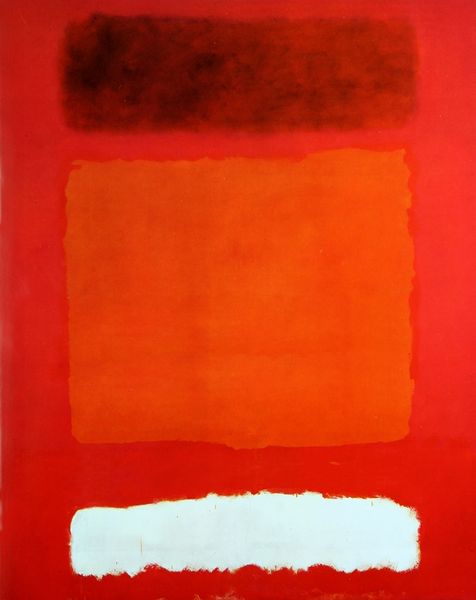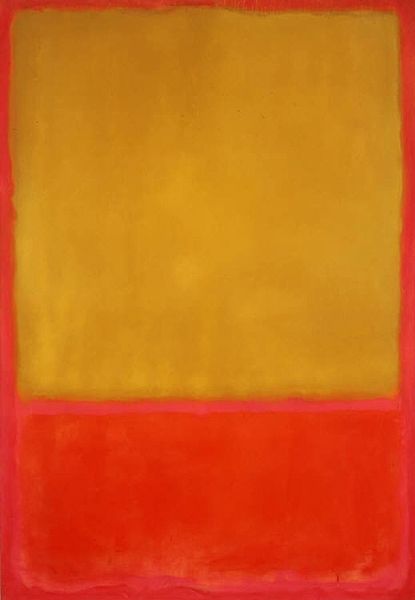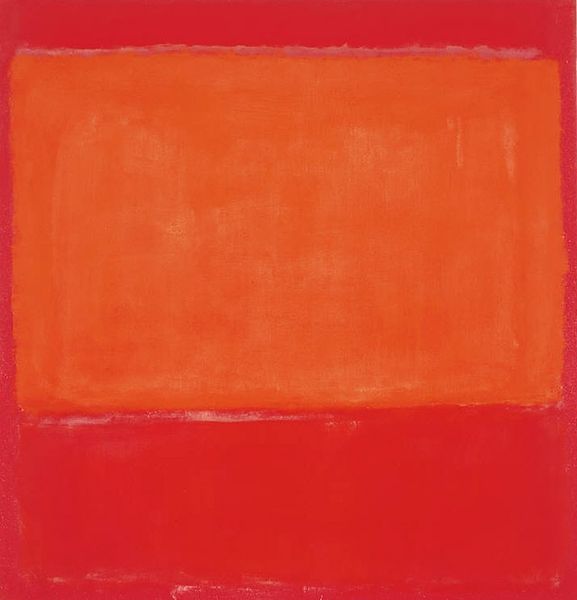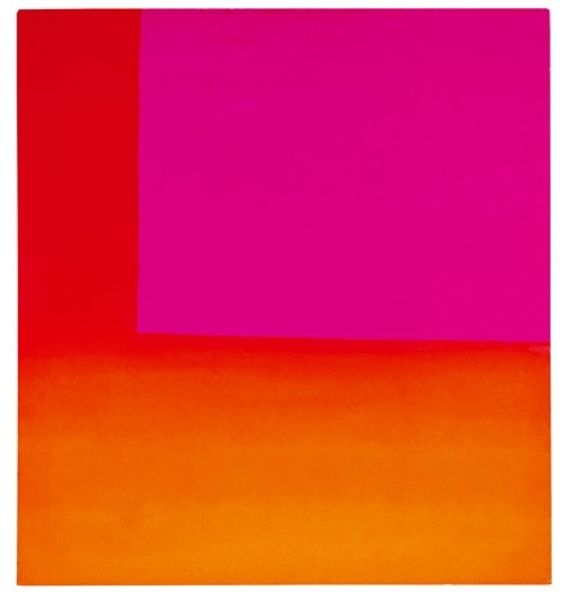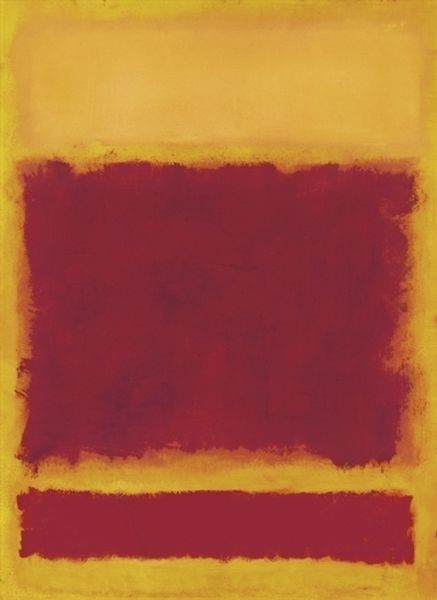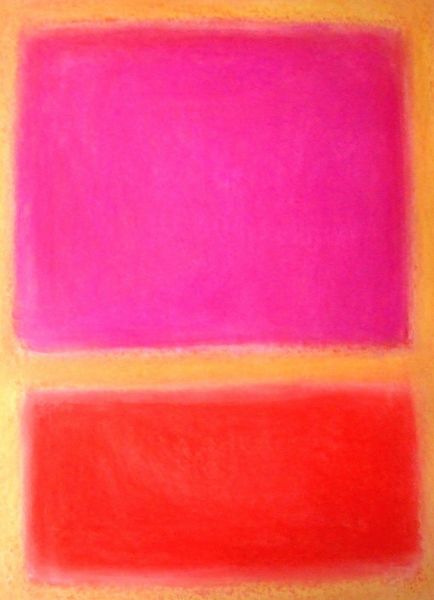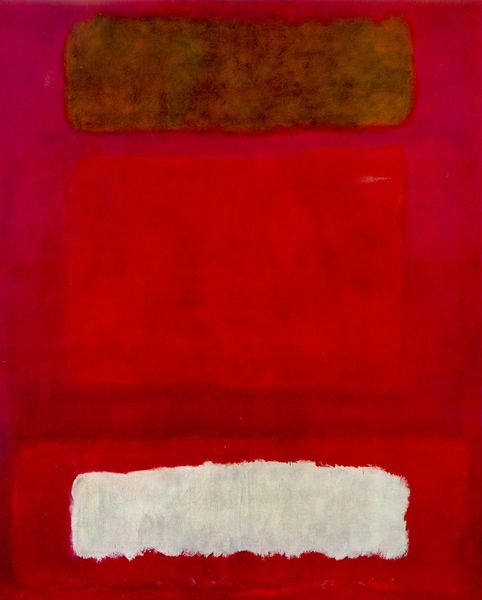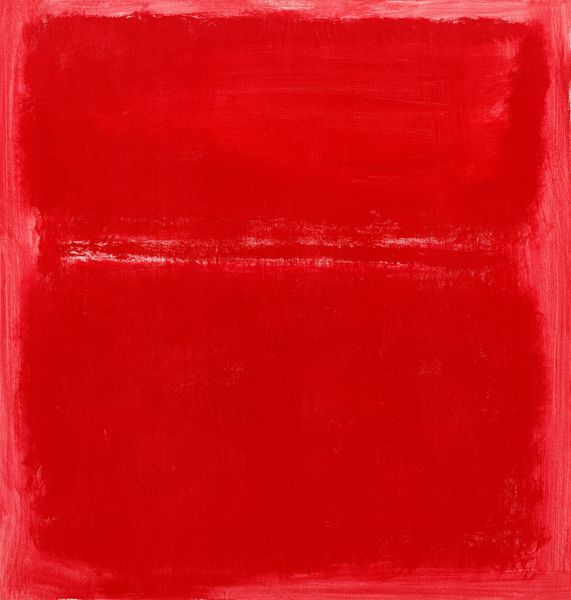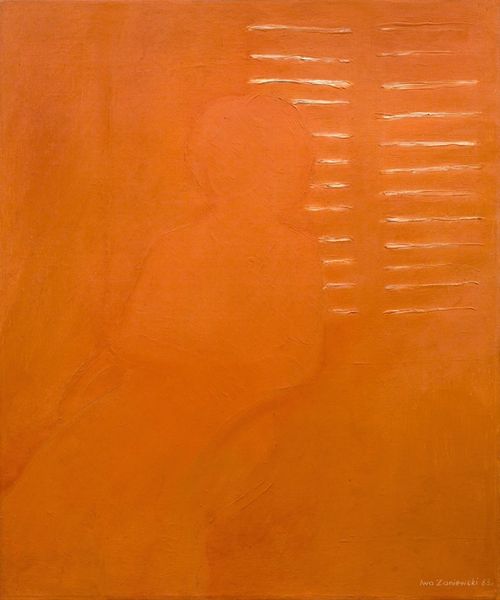
acrylic-paint
#
abstract-expressionism
#
abstract expressionism
#
abstract painting
#
colour-field-painting
#
acrylic-paint
#
form
#
geometric pattern
#
abstract pattern
#
geometric-abstraction
#
abstraction
#
line
#
hard-edge-painting
Copyright: Rupprecht Geiger,Fair Use
Editor: We're looking at Rupprecht Geiger's "Goulimine," painted in 1964 using acrylic. The work consists of an intense orange rectangle hovering over a field of deep red, surrounded by a red border. It really vibrates with heat! What should viewers take away from this painting? Curator: Considering the historical context, Geiger produced this piece in a post-war era grappling with intense social and political upheaval, specifically a rejection of traditional forms. Looking at "Goulimine," consider how geometric abstraction became a visual language for this societal shift. Where do you think museums and galleries fit into popularizing pieces like this? Editor: It's interesting you mention the context in the '60s... To me, a minimalist work like this one serves almost as a meditative breather. Its success in the market reflects the idea of galleries providing a certain lifestyle. It definitely feels at home here. Curator: Exactly! Art becomes an aspirational object. What do you think the painting's title contributes to this? "Goulimine" suggests a geographical location, a Moroccan town. Editor: Oh, wow, I didn’t know that! That changes things. I thought it was totally abstract, focused purely on color. Now I am trying to consider what Moroccan landscapes look like, and imagine whether the artist aimed to replicate any aspects of the scenery. Curator: And the political implications of exoticizing imagery like that too, right? Are we dealing with straightforward admiration, or something more complicated? It forces us to question the power dynamics inherent in the artistic gaze. Editor: This perspective is incredibly valuable in giving me some food for thought! Curator: The layering of contexts, from artistic movements to geographical references, demonstrates how even seemingly simple paintings engage in broader cultural and political dialogues.
Comments
No comments
Be the first to comment and join the conversation on the ultimate creative platform.
